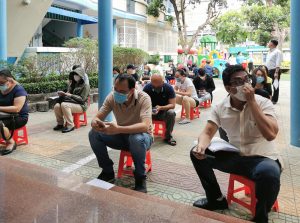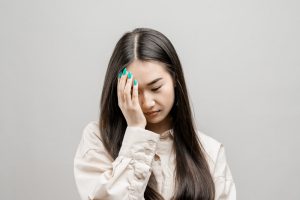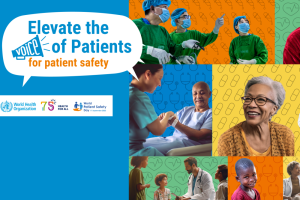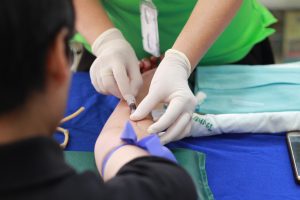Not everyone may have a healthy or straight spine. Some individuals might have “C” or “S” shaped curvatures to their spine which may occur immediately before puberty or in some instances, during adulthood. Such ‘C’ or ‘S’ shaped curvatures of the spine are called scoliosis.
Various studies have been conducted to understand the prevalence of scoliosis in Asian countries. In one such study conducted in Singapore, a higher incidence of scoliosis was found in female children of Chinese descent than those of Malay or Indian descent. Studies in India have found that an estimated 0.4% of the population is affected by scoliosis.
Main causes of scoliosis
Scoliosis may occur as a result of any of the following conditions:
- Cerebral palsy
- Muscle wasting
- Infections or injuries to the spine
- Birth defects
Individuals with a family history of scoliosis may be at a greater risk of also developing this condition.
Symptoms of scoliosis
Scoliosis is diagnosed when the affected individual’s spine presents with a curvature of at least 10 degrees, this is measured by obtaining an x-ray of the spine. In most cases, a 10 degree curvature does not present with any symptoms in the affected individual. However, in instances where the curvature of the spine exceeds 20 degrees, the affected individual will start experiencing symptoms.
The main symptoms of scoliosis are an uneven appearance of various parts of the body. This includes uneven shoulders, waist, or hips.
In extreme cases of scoliosis, the ribs on one side of the body may stick out more prominently than on the other side.
These symptoms may be more noticeable by others around the affected individual, especially when a shirt or blouse fits awkwardly. Parents might also notice this condition in their children while giving them baths or when they wear swimming attire.
As the scoliosis progresses, you might also notice some of these symptoms:
Change in walking patterns
An individual with extreme scoliosis may not be able to walk properly, their hand might brush against their hip or they may have a sideways bend when they walk.
Reduced motion
Due to the curvature of the spine, an affected individual might find it difficult to bend or turn.
Cardiovascular and respiratory problems
Depending on the severity of scoliosis, as the rib cage twists and turns, it will reduce the space available for the organs on the inside. The lungs might have a more restricted space which may affect their ability to sufficiently expand which in turn may make breathing more difficult.
Pain
As the condition progresses, it places undue strain and stress on the muscles which can result in inflammation and pain.
Different types of scoliosis
Scoliosis can be categorised into different types based on the curvature of the spine. Some of these categories are:
- Right thoracic curve: In this type of scoliosis, the region of the upper back (thoracic region) curves towards the right.
- Right lumbar curve: Here, the lower region of the spine (lumbar region) curves towards the right.
- Right thoracolumbar curve: Here, both the thoracic and lumbar regions are curved.
- Double major curve: This type of scoliosis has two curves, on the upper and lower regions of the spine. While the thoracic region curves towards the right, the lumbar region curves towards the left. Thus, the double major curve appears to be “S” shaped. As the curvature occurs on both sides, it may not be visible initially.
Diagnosis of scoliosis
The first step towards diagnosing scoliosis is a physical examination. Your physician will ask you to stand straight with your hands placed on either side of your body while examining the spine for curvatures. You may also be asked to bend forward to enable your physician to further examine your spine.
If your physician suspects a spinal curvature, further diagnostic imaging such as a x-ray, magnetic resonance imaging (MRI), computed tomography (CT) scan or a bone scan might be required.
Managing scoliosis
If the spinal curvature is less than 10 degrees, the physician will advise regular check ups for observation every 4 to 6 months., where the physician will order x-ray imaging to determine how the condition is progressing.
In most cases, scoliosis can be managed through exercise, physical therapy and medical observation. Yoga and pilates are also recommended to reduce pain and increase flexibility.
Other types of treatment include:
Bracing
This method is effective for scoliosis that is diagnosed at an early stage. Bracing reduces the curvature of the spine and is recommended for patients with a curvature of 25 to 40 degrees.
Typically, a person will be asked to wear their brace for 16 to 23 hours each day and it is recommended that children wear a brace till they stop growing.
Two types of braces used to treat scoliosis include:
- Underarm brace: Such braces are worn towards the lower part of the body and treat curvatures of the lower spine.
- Milwaukee: This brace covers the region of the torso except the legs and arms. Milwaukee braces are used to treat conditions that underarm braces cannot address.
Surgery
Surgery is recommended for patients whose spinal curvature is more than 40 degrees. During surgery, the vertebrae is fused using a bone graft, rod and screw. The rods help to keep the spine straight, and in due course, the vertebrae and bone grafts will fuse together.
Conclusion
How scoliosis may affect your health depends on its severity. In cases of mild scoliosis, the affected individual is able to manage their condition without any affect on their day to day activities. But in severe instances, the affected individual may find it difficult to walk or perform everyday activities and may require help.
Affected individuals should find support groups to meet people with similar conditions, this provides the support and encouragement required to carry on with the daily activities of life.
Article is written in conjunction with International Scoliosis Awareness Day 2021.










